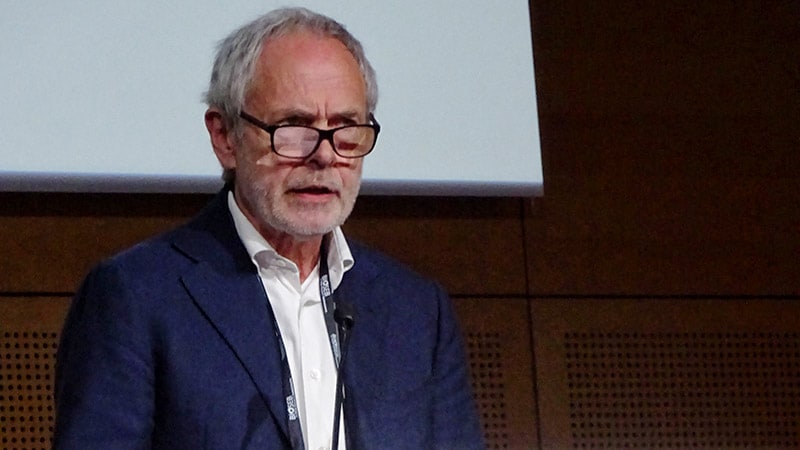If Scotland were to adopt the 2019 European Society of Cardiology (ESC) guidelines for diabetes cardiovascular disease (CVD) risk management, more than 80,000 additional individuals with type 2 diabetes would be newly-prescribed either an SGLT-2 inhibitor or a GLP-1 receptor agonist.
The findings, from a Scottish nationwide diabetes registry, were published on June 24 2020 in Diabetes Care by Dr Thomas Caparrotta, a research fellow and clinical pharmacology trainee at the University of Edinburgh and colleagues.
'Striking Findings'
Released in September 2019 by the ESC in collaboration with the European Association for the Study of Diabetes (EASD), the guidelines reflect recent evidence of cardiovascular disease reduction with sodium–glucose cotransporter 2 inhibitors (SGLT-2i) and some glucagon-like peptide 1 receptor agonists (GLP-1RA) in people with type 2 diabetes. The ESC and EASD recommended that patients who are risk stratified as 'high' or 'very high' cardiovascular risk and are either diabetes drug-naïve or on metformin monotherapy be started on one of those two classes of agents regardless of baseline HbA1c level.
In an interview, Dr Caparrotta told Medscape News UK that the new data from Scotland were "quite striking findings, really". He explained: "In the type 2 diabetes population as a whole, 80% were at high risk. When we looked at those who were drug naïve or on metformin monotherapy, three quarters were high or very high risk so would be eligible. In Scotland, an additional 80,800 people would receive an SGLT-2 inhibitor or a GLP-1 receptor agonist if the guidelines were implemented as is. It’s an overwhelming increase in prescribing."
The number corresponds to nearly one-third of all people in Scotland with type 2 diabetes.
No country has adopted the guidelines as yet, and given the considerably higher cost of the two drug classes compared with older glucose-lowering agents, there is likely to be some debate, he noted.
"I think the ESC/EASD guidelines are important insofar as they bring the management of type 2 diabetes more in line with modern management of cardiovascular risk in terms of blood pressure and cholesterol modification. But there are some controversial aspects, particularly throwing HbA1c to the wind and not accounting for it at all," Dr Caparrotta said.
The recommendation for use of the newer agents in drug-naïve patients without initiating metformin first is also a departure from current practice, he observed.
In addition, the authors point out in the paper that exposing that many more individuals to these agents will likely mean greater numbers will experience adverse events, including genitourinary infections and diabetic ketoacidosis with SGLT-2 inhibitors, and gastrointestinal adverse effects and potential worsening of retinopathy with GLP-1RAs.
'Use the Most Effective Tools at Our Disposal'
Asked to respond, Peter Grant, ESC/EASD guideline EASD co-chair and professor of medicine and a diabetologist at the University of Leeds, told us: "People with diabetes of longish duration and at high cardiovascular risk have a threefold increased death rate from CVD, rising to forty-fold in the presence of renal disease. It is our task to use the most effective tools at our disposal to ameliorate this risk, of which SGLT-2 inhibitors are a very important example. We should treat our patients in a personalised manner and not accept second best."
The new Scottish data, he said, "mean that more people will benefit from the use of these drugs".
Asked about the potential increased cost, Prof Grant said that wasn’t part of the writing panel’s charge. Rather, it was "to review the literature and to recommend best practice. Decisions about cost are to be made by other organisations, mostly at a country rather than European level."
Regarding the recommendation to use these drugs first-line regardless of HbA1c, Prof Grant said: "Baseline haemoglobin A1c is not relevant, as we are recommending these drugs for cardiovascular and renal-protective effects that are not glucose-mediated. Glycaemia is very important and should be pursued as usual, taking the baseline HbA1c into account."
As for leaving metformin out of the equation, Prof Grant said: "The evidence in the literature indicates that the effects of the SGLT-2 inhibitors were independent of background metformin. Also, the evidence for beneficial cardiovascular effects of metformin is weak when compared with that for these newer agents."
Prof Grant also noted that adverse events occur "with every drug on the market", adding that SGLT-2 inhibitors "are generally well tolerated, but if there are side effects a different approach should be taken".
Nearly a Third of Scottish People With T2D Would Receive a New Prescription
The data came from the Scottish Care Information - Diabetes clinical information system, which includes more than 99% of people living in Scotland with a diagnosis of diabetes.
Overall, among the 265,774 people with type 2 diabetes who were alive on January 1, 2019, 70.9% would be classified as very high risk (diabetes, established cardiovascular disease, other target organ damage, or three or more major risk factors) and another 9.8% as high risk (diabetes duration 10 or more years without target organ damage, plus any other additional risk factor).
Of the 53,194 people in the drug-naïve group, 4.0% were considered high risk and 70.5% very high risk. Of the 56,906 on metformin monotherapy, those proportions were 6.5% and 65.9%, respectively.
Thus, 74.5% of the drug-naïve group (n=39,630) and 72.4% of those on metformin monotherapy (n=41,200) would be eligible to receive an SGLT-2 inhibitor or a GLP-1RA. That adds up to 80,830 more individuals beyond the 31,228 in Scotland who are currently taking one of those drugs.
This would mean initiation of either an SGLT-2i or a GLP-1RA in almost one-third (30.4%, or 80,830 of 265,774) of people in Scotland with type 2 diabetes if the guideline were implemented as is.
Will the ESC/EASD Guidelines Be Officially Adopted?
Dr Caparrotta noted that although the American Diabetes Association (ADA) and EASD have added short updates to their 2018 glycaemic management guidelines saying that people with high cardiovascular risk should be considered for SGLT-2 inhibitors or GLP-1 receptor agonists independently of HbA1c, they haven’t issued comprehensive guidelines as ESC has. "It will be interesting to see if they do," he remarked.
The most recent major type 2 diabetes management guidelines from the National Institute for Health and Care Excellence (NICE) were published in 2015 and from the Scottish Intercollegiate Guidelines Network (SIGN) in 2017 (although both have had iterative updates since). Whether they will adopt the ESC/EASD recommendations remains to be seen, but Dr Caparotta expects that they will use these new data in their deliberations.
"My feeling is that if the next ADA and EASD update comes down on the same side of the fence as these [ESC/EASD] guidelines, then the change might become irresistible," he said. However, he noted: "Of course NICE takes cost into account."
But for now: "I think just on the basis of these [ESC/EASD] guidelines, I would exercise caution, particularly in light of the controversies. I think it’s something to consider in select very high-risk patients, but you’d want clearer evidence and the backing of more organisations."
Dr Caparrotta is a Diabetes UK Sir George Alberti Clinical Research Fellow. He has no other disclosures. Prof Grant is an advisory board member and / or speaker for Novo Nordisk, Boehringer Ingelheim, Merck, Janssen, Astra Zeneca, Eli Lilly, and BMS.
Published June 24th 2020 in Diabetes Care.



